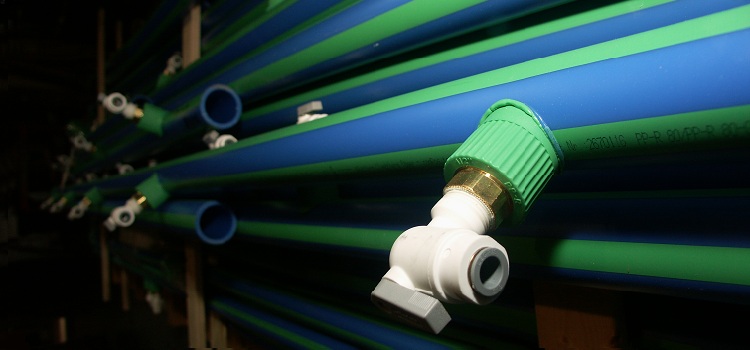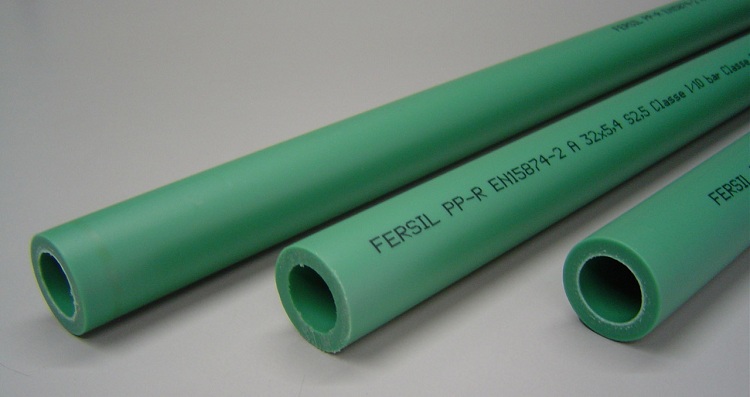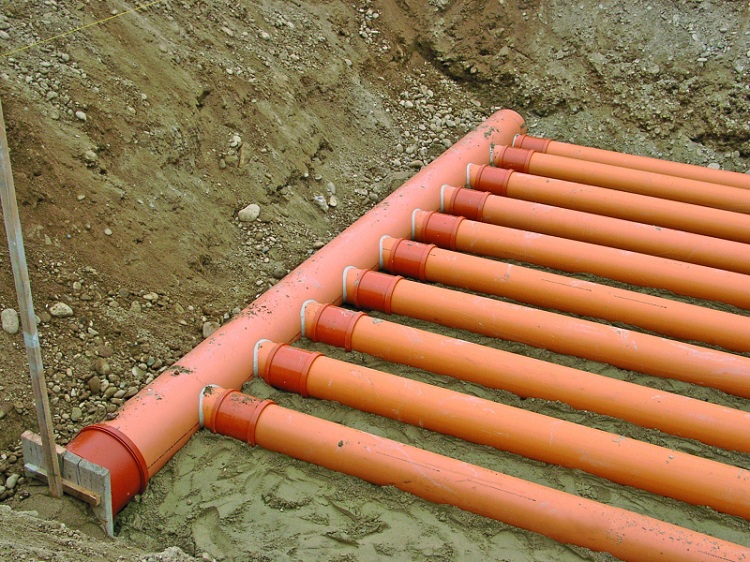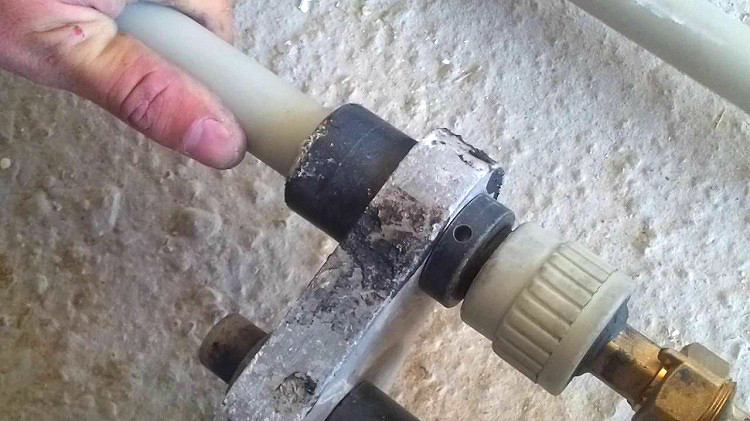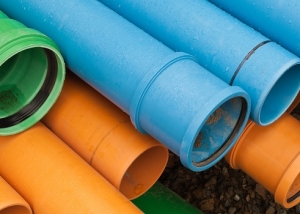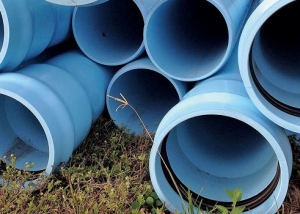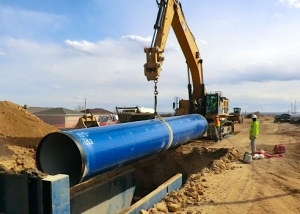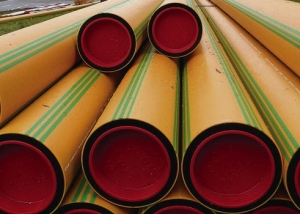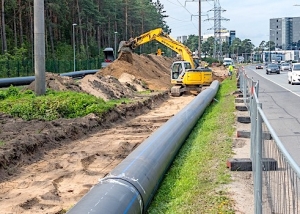The PP water pipe in terms of demand is second only to the polyethylene analogue. A safer, economical and suitable material for arranging internal and external utilities than polypropylene does not exist today. Therefore, polypropylene pipes are successfully used in any plumbing or heating system.
Content
Production and basic properties of polypropylene
The properties and the advantages arising from them of using any product or element are largely due to the material from which it was made. The industrial production of polypropylene as a material for the production of products is carried out in two polymerization methods:
- In the mass.
- In solvent. After passing through a centrifuge, the separated polypropylene is cleaned of catalyst residues, dried, mixed with dye and stabilizers, and granulated.
The resulting material is characterized by the following physical and mechanical properties:
- strength against repeated bends and bumps;
- good electrical insulating characteristics;
- chemical resistance;
- wear resistance;
- low gas permeability and vapor permeability;
- resistance at high temperature to the effects of acids, alkalis, mineral and vegetable oils, salt solutions;
- exposure to organic solvents at room temperature;
- the ability to mix easily with dyes, crystallize, process and chlorinate easily;
- the possibility of operation at a maximum temperature reaching 120-140º C.
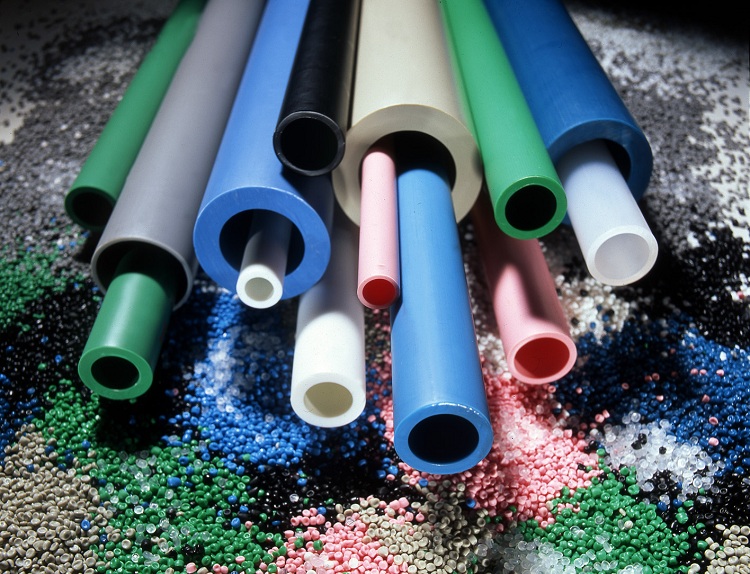
Depending on the type of raw material and additives to it, pipes with different properties are obtained
Good to know! High sensitivity to the effects of light and oxygen is reduced by introducing stabilizers. Low frost resistance is neutralized by the introduction of ethylene units at the molecular level.
With the introduction of certain modifying additives, polypropylene, while maintaining the basic properties, acquires additional consumer characteristics, becoming:
- mineral-filled. Thanks to calcium carbonate or talc, the concentration of which is 10-65%, an increase in strength and heat resistance is achieved;
- glass-filled. Bringing the concentration of fiberglass to a tenth or even half, give the material greater strength and elasticity in bending;
- incombustible. The self-extinguishing property is achieved thanks to the introduced flame retardants;
- elasticized. By introducing elastomers into the polymer matrix, they also achieve an increase in frost resistance.
By modifying polypropylene, giving it new positive properties is achieved:
- greater strength and stiffness;
- incombustibility;
- exposure to ultraviolet radiation;
- elasticity.
The use of modified polypropylene is in demand for the manufacture of various types of pipes having different purposes.
Classification of polypropylene pipes
Based on the plastic used for manufacturing, PP pipes can be marked in different ways.
PPH. Homopolymer propylene pipes are used in technological communications with medium and high temperatures of the working environment. They are operated in:
- semiconductor manufacturing by neutralizing acidic effluents or by supplying deionized water;
- food industry - for transportation, filtration and storage of food;
- textile industry;
- pharmaceuticals - for transportation and storage of pure chemicals and substances;
- chemical industry - for transportation of acids and alkalis;
- pulp and paper industry - for moving caustic solutions with high temperature.
RRV. Pipes from block copolymers of polypropylene are in demand by sewage systems with low and medium temperatures, up to five minutes they can withstand a temperature jump to centigrade;
PPRC Pipes made from a static propylene-ethylene copolymer are the most common. The reason lies in the properties of this plastic, marked:
- increased elasticity;
- viscosity;
- resistance to the influence of the temperature of the working medium in the range from -10º С to + 90º С (for a short time - up to + 110º С);
- resistance to acid and alkaline solutions.
In response to the influence of the temperature of the working medium, a polypropylene pipe is intended for:
- hot water;
- cold water;
- ventilation
- sewage system;
- heating.
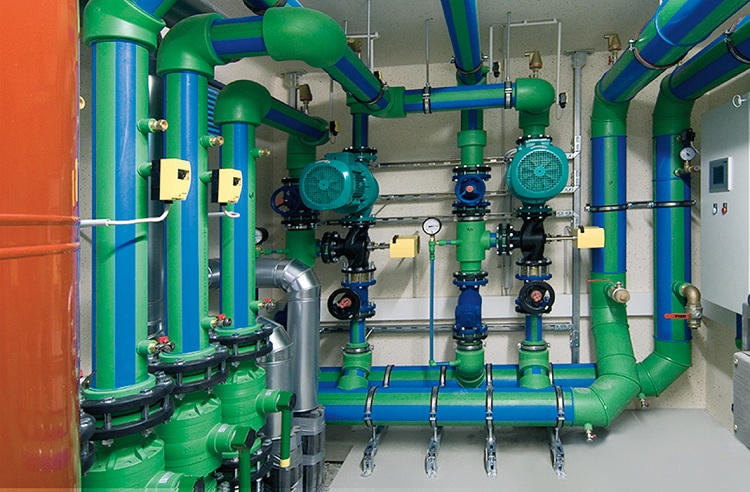
PP pipes withstand high temperatures, so they are allowed to be used for the installation of heating and domestic hot water
Depending on the design pressure of the medium:
- PN-10;
- PN - 16;
- PN - 20;
- PN - 25.
Each brand of polypropylene pipes is produced with a wall thickness in a certain range.
Depending on the required strength characteristics, the following can be produced:
- reinforced;
- corrugated;
- unreinforced.
Features of the use of polypropylene pipes depending on the color of the paint
The coloring of a polypropylene product is carried out to determine the scope of its application. Elements of water communications can be made in several colors:
- white. They are distinguished by resistance to pressure of the working medium, are easily connected by welding and are quickly mounted. Not recommended for use in outdoor conditions, since crystallization of the structure occurs at zero temperature. It is undesirable even to simply transport white pipes in such weather, because it is easy to damage them with a slight mechanical or physical impact;
- green. Typically used for underground sewage. Owners of personal plots are used for installation of irrigation systems, since under these conditions the instability of the system to internal pressure can be neglected;
- orange (brown, red). Multilayer products equip the external underground gravity sewer;
- gray. The most common variety with a wide range of applications, including water supply and domestic sewage, heating systems - centralized and individual;
- black. Due to the acquired resistance to ultraviolet radiation and aggressive environments, they are successfully used in the installation of a drainage system or external sewage system.
Production and use of reinforced PP pipes PN - 25
For use in heating systems, polypropylene pipes are given greater resistance to the effects of the working environment, using reinforcement, which can be done in several ways:
- wrapping the outer surface with aluminum foil (solid or perforated);
- creating an inner aluminum interlayer offset to the outer edge. When using perforated aluminum foil, the layers join together without glue;
- using fiberglass;
- creating an inner layer of a special composite mixture combining polypropylene with fiberglass or fiberglass.
Important! Reinforcement with aluminum foil, which contributes to a significant reduction in the coefficient of thermal expansion, requires adherence to technological discipline when conducting pipe welding and installation of fittings. It becomes mandatory to clean the ends of the pipes using a special welding nozzle or miter.
During installation fiberglass reinforced pipes the need for such an operation disappears, which simplifies and speeds up the installation.
Reinforcing with composite mixtures, the linear expansion coefficient is reduced to close to zero, and the products are twice as strong as steel counterparts.
Pipe two-layer corrugated software
The need for reliable transportation of aggressive media and effluents with sufficiently high temperatures gave rise to a two-layer corrugated polypropylene pipe.
It has extremely high performance characteristics:
- high ring stiffness. It is assigned to the SN 8 class, which allows use at a greater load on the ground, even under highways and traffic intersections, at the airport;
- chemical resistance. It is not damaged by strong alkalis, mineral oils and salts. Surface-active substances do not cause the effect of cracking, which allows successful use in household sewage systems;
- temperature resistance to the effects of wastewater with temperatures up to 95º C;
- non-susceptibility to electrochemical corrosion, which allows not to fear destruction under the influence of stray electric currents;
- corrosion resistance;
- low exposure to hydroabrasive wear. This allows you to move the working medium containing solid particles;
- low coefficient of roughness and practical coincidence of the values of the internal and nominal diameters provides an increase in throughput. At the level of throughput, such a habitual noise for pipelines as overgrowing, siltation practically does not affect;
- the possibility of using even slight deviations;
- resistance to shock at low temperatures, which facilitates installation and repair operations;
- ease of connection with pipes of various types. The passage of wells involves the installation of protective couplings, eliminating the transfer of load to the pipeline;
- ease of transportation, installation and repair. Standard repair couplings connect sections of the pipeline, carry out repair inserts;
- the ability to cut diagonally;
- fifty-year warranty.
Installation of a polypropylene pipeline
The arrangement of the pipeline involves the use of threaded or welded polypropylene fittings. Obtaining a homogeneous one-piece seam is achieved using three types of welding:
- Coupling (polyfuse), if the diameter of the pipe is less than 63 mm;
- Butt (flange) - with large diameters.
- With electrical fittings.
The complete set of soldering irons provides for Teflon-coated nozzles to melt the inner surface of the socket or sleeve and the outer surface of the ends of pipes of different diameters.
If polypropylene pipes are heated during operation, which will affect the change in their size, then compensators (L-shaped, round, U-shaped) and sliding bearings should be used.
When docking with a metal or metal-plastic pipe, a fitting will be needed, on one side of which a threaded insert is placed, and additional seals.
In the presence of external reinforcement with aluminum foil, the end face of the coupling is cleaned. Cleaning the polypropylene pipe carried out with a special tool - manual or mechanical.
Installation is carried out in the following sequence:
- The pipe is cut at a right angle.
- By installing the desired nozzle on the soldering iron, it is heated, which takes from a quarter to a third of an hour, to a temperature of 250-270º C.
- A fitting socket is put on the mandrel on one side of the apparatus, and on the other side, the pipe end is inserted into the sleeve to the marked depth.
- By heating both elements, upon removal from the nozzle, they begin the connection, requiring alignment. Underheating is fraught with unreliability of the joint, overheating will lead to deformation of the seam and the shape of the joint.
- Cooling happens almost instantly. Bending and turning the joint is unacceptable in these few seconds. An improperly made connection is not fixed, but cut out.
Decent operational characteristics of PP pipes allow to achieve long-term trouble-free operation of a correctly mounted system.
